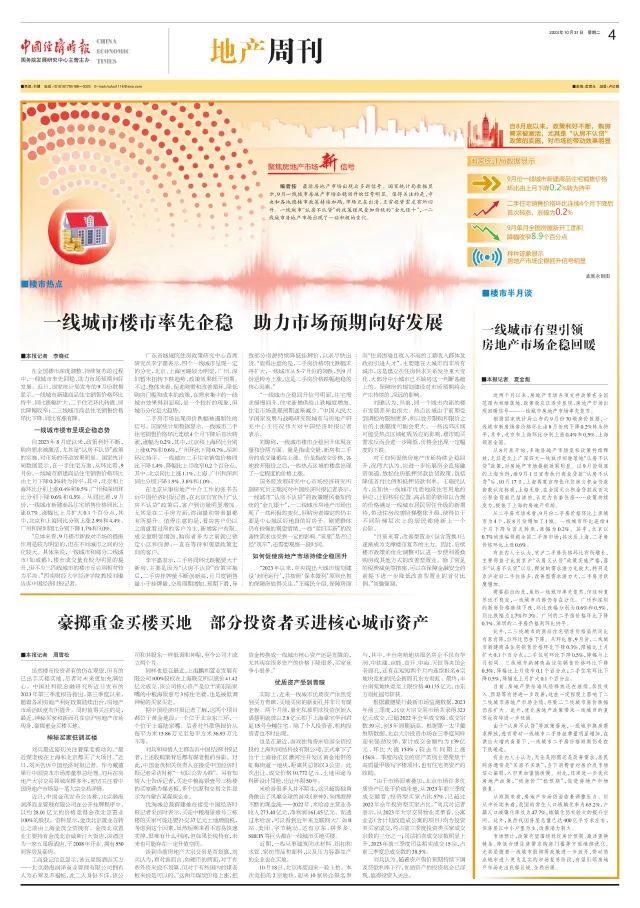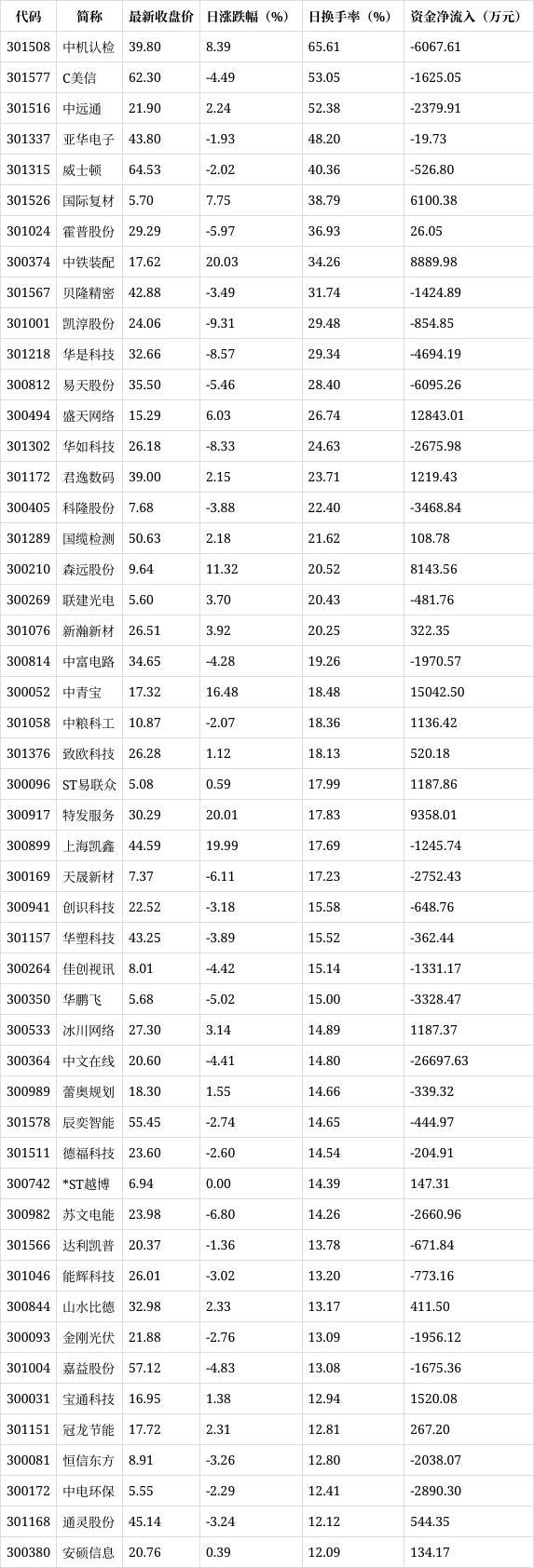







The GEM index fell 2.23% today to close at 1,682.48 points, and the daily turnover of the GEM was 170.491 billion yuan, 11.054 billion yuan less than the previous trading day. Among the tradable GEM stocks today, 397 stocks closed up, with 7 stocks rising by more than 10%. Among them, 4 stocks, including China Railway Assembly, Tefa Service and Jardine Matheson, rose by 5% to 10%, 12 stocks closed down, 893 stocks closed down, and 2 stocks fell by more than 10%.
According to statistics of data treasure of Securities Times, in terms of turnover rate, the average turnover rate of GEM today is 2.45%. The interval distribution of turnover rate shows that there are 20 with turnover rate over 20%, 52 with turnover rate between 10% and 20%, 138 with turnover rate between 5% and 10%, 950 with turnover rate between 1% and 5%, and the turnover rate is less than 1%.
The highest turnover rate is CNKI, which closed up 8.39% today, with a turnover rate of 65.61% throughout the day and a turnover of 1.092 billion yuan. Followed by C Maxim, which is a new stock within 5 days of listing, the closing decline is 4.49%, the turnover rate is 53.05%, the daily turnover is 382 million yuan, and the net outflow of main funds throughout the day is 16.2505 million yuan; The top turnover rates are COSCO, Yahua Electronics and Weston, with turnover rates of 52.38%, 48.20% and 40.36% respectively.
Statistics show that among the high turnover stocks with turnover rate exceeding 20%, C Maxim is a new stock listed within 5 days.
From the market performance, among the high turnover stocks, 10 stocks rose today, with the top gainers including China Railway Assembly, Senyuan and SINOMACH, rising by 20.03%, 11.32% and 8.39% respectively, and the top losers including Kaichun, Huashi Technology and Huaru Technology, falling by 9.31%, 8.57% and 8.33 respectively.
In terms of industries, among the stocks whose turnover rate exceeds 20% today, the computer industry has the largest number of stocks, with 4 stocks on the list; Electronics, basic chemicals, etc. followed closely, with 3 and 2 stocks on the list respectively.
According to the public information of the Exchange, there are 6 GEM stocks with high turnover rate on the list today. Among the top business departments, 5 stocks have institutional figures. China Railway Assembly has 2 institutional seats on the list, with a total net purchase of 10,004,700 yuan. International Composite Materials has 1 institutional seat on the list, with a total net sale of 2,976,100 yuan, and COSCO has 2 institutional seats on the list, with a total net sale of 3,027,500 yuan. There are 2 institutional seats in Weston, with a total net sales of 14,580,800 yuan, and 5 institutional seats in Yahua Electronics, with a total net sales of 51,097,200 yuan. Shenzhen Stock Connect has appeared in two dragon and tiger lists, COSCO Stock Connect has a net purchase of 18,505,200 yuan, and CIMC has seized a net sale of 2,669,200 yuan. The top net buyers in the business departments are China Railway Assembly, COSCO and Asia. The net purchase amount was RMB 10,539,700, RMB 9,921,000 and RMB 9,604,600, respectively. The top net sales of the business department were CNKI, International Composite Materials and Weston, with net sales amounts of RMB 26,269,100, RMB 15,114,600 and RMB 8,179,800 respectively.
In terms of capital flow, among the stocks with high turnover rate, 8 stocks received a net inflow of main funds today. Shengtian Network, China Railway Assembly and Senyuan have more net inflows, with net inflows of 128 million yuan, 88,899,800 yuan and 81,435,600 yuan respectively. Tian Yi, CIMC and Huashi Technology have more net outflows of 60,952,600 yuan respectively.
Among the stocks with high turnover rate, one stock has published the annual performance report for 2023, and the one with higher increase in net profit has been recognized by SINOMACH, with an increase of 22.73%. A total of 7 annual performance forecasts for 2023 were announced. Judging from the median increase in net profit, Senyuan shares have the highest increase in net profit, and the estimated median net profit is-100 million yuan, with a year-on-year increase of 59.16%; China Railway Assembly is close behind, and the median increase of expected net profit is 32.70%. (data treasure)
On January 26th, the turnover rate of GEM was the highest.
